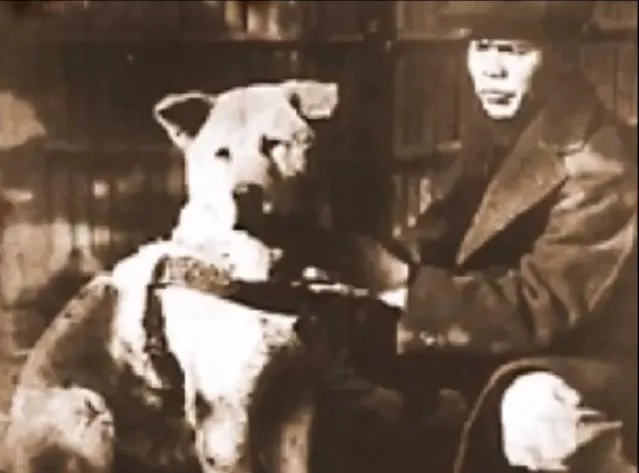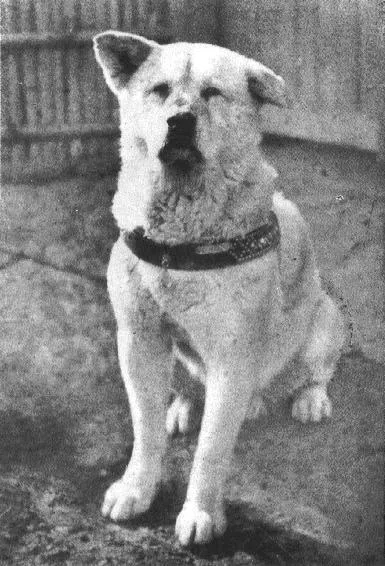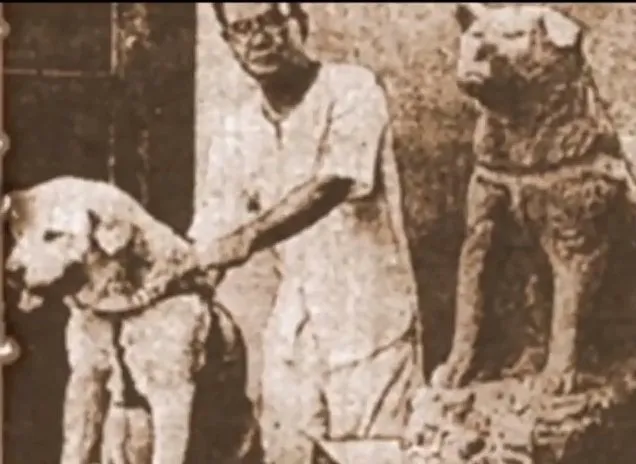Have you ever encountered a story of unwavering devotion that transcends time and touches the deepest parts of your soul? In Japan, there is one such tale—the extraordinary story of Hachiko the loyal dog, an Akita whose faithfulness became a national legend and a global symbol of true companionship. If you ever visit Japan, particularly Tokyo, you’re almost certain to hear about Hachiko. His profound loyalty has inspired books, multiple films, and even an iconic bronze statue that stands proudly next to Shibuya Train Station, where hundreds of people gather daily to pay homage and capture a moment with this beloved canine hero. Beyond Japan, Hachiko’s influence extends, with a replica statue in Rhode Island, USA, honoring the setting of the American film adaptation, “Hachiko: A Dog’s Story.” But what is it about this remarkable dog that captivates so many? Prepare to delve into the amazing, true, and incredibly poignant narrative of Hachiko, whose legacy continues to warm hearts worldwide.
The Humble Beginnings of a Legend
The remarkable dog Hachiko’s true story began on November 10, 1923, on a farm in Odate City, nestled within Japan’s picturesque Akita prefecture. He was a purebred Akita dog, born to an Akita father named Oshinai and a mother named Goma. At the same time, in Tokyo, Professor Hidesaburō Ueno, an esteemed agricultural science professor at The University of Tokyo, harbored a long-standing desire for a purebred Japanese Akita. After an extensive search, one of his students helped him find the perfect puppy in Odate City.
Professor Ueno acquired the puppy for ¥30, a considerable sum in those days, and the little Akita embarked on a grueling 20-hour train journey to Tokyo. The arduous trip left the young puppy in critical condition upon his arrival at Professor Ueno’s home on January 15, 1924; initially, he was even thought to be dead. According to Professor Mayumi Itoh’s biography of Hachiko, Professor Ueno and his girlfriend, Yae, diligently nursed the fragile puppy back to health over the next six months. Professor Ueno affectionately named his new companion Hachi, meaning “eight” in Japanese, a number considered lucky in Japanese culture. From that moment, Hachi and his owner formed an unbreakable bond, becoming the closest of friends. Professor Ueno cherished Hachi like a son, and the two were inseparable.
 Professor Ueno and Hachiko sharing a tender moment
Professor Ueno and Hachiko sharing a tender moment
A Daily Ritual: Loyalty in Action
As Hachi matured, a heartwarming daily ritual began. Each morning, he would faithfully accompany Professor Ueno to Shibuya Train Station in central Tokyo, watching his beloved master depart for work. In the afternoon, Hachi would return to the station, patiently waiting by the exit for Professor Ueno’s train to arrive, eager to greet him. This routine became a cherished part of their lives, a testament to their deep connection and Hachiko’s burgeoning loyalty. For a year and four months, this touching display of devotion was a familiar sight to the commuters and station staff.
The Day the World Changed: Ueno’s Untimely Demise
Then came May 21, 1925. As was his custom, Hachi sat expectantly by the exit at Shibuya Train Station, awaiting Professor Ueno’s return. But his beloved owner never appeared. Unbeknownst to Hachiko, Professor Ueno had suffered a sudden and fatal cerebral hemorrhage while at work, passing away unexpectedly at the age of 53. The world of the faithful Akita had been irrevocably altered.
The Enduring Vigil at Shibuya Station
Following Professor Ueno’s death, Hachi moved to the home of Kozaburo Kobayashi, a former gardener for the Ueno family. Yet, Hachiko’s devotion remained unshaken. For the remainder of his ten-year life, he continued his daily pilgrimage to Shibuya Train Station. Every afternoon, precisely when Professor Ueno’s train was due to arrive, Hachiko would appear, taking up his customary spot. He would wait for hours, patiently, forlornly, for the return of a master who, tragically, would never come back. “In the evening, Hachi stood on four legs at the ticket gate and looked at each passenger as if he were looking for someone,” Professor Itoh recounts in her biography.
Despite living in Tomigaya, close enough to Professor Ueno’s former residence to easily walk to Shibuya, Hachiko initially faced challenges. There are accounts of him being mistreated, even beaten and bullied, by indifferent pedestrians, station staff, and children who failed to understand the depth of his vigil. This harsh treatment persisted until his story captured the attention of the media, forever changing how he was perceived.
 Hachiko, a purebred Akita dog, waiting patiently
Hachiko, a purebred Akita dog, waiting patiently
Hachiko Becomes a National Symbol
In 1932, a reporter from a major Japanese newspaper discovered Hachiko’s compelling story and published it. This powerful account quickly catapulted Hachiko into national celebrity status. People across Japan began to refer to him as “Chuken-Hachiko“, a title that translates to “Hachiko – the faithful dog.”
The narrative of the dog who never gave up resonated deeply, inspiring countless individuals and drawing visitors from all over the world to Shibuya Train Station. They came not only to witness Hachiko’s unwavering vigil but also to offer him treats and comfort. Hachiko had touched the hearts of the Japanese people, transforming into a living embodiment of loyalty and an undisputed national hero.
Hachiko’s steadfast wait outside Shibuya Station continued daily, a poignant vigil for his departed master. He maintained this extraordinary display of devotion for an incredible nine years, nine months, and 15 days, until his own passing on March 8, 1935, at the age of 11. Even today, his legacy endures as a powerful symbol of love, devotion, and unparalleled loyalty.
 Hachiko featured prominently in a Japanese newspaper
Hachiko featured prominently in a Japanese newspaper
Honoring a Legend: Hachiko’s Statues and Memorials
Hachiko’s enduring story is commemorated throughout Tokyo and beyond, with multiple statues and monuments serving as testaments to his profound loyalty.
The Iconic Shibuya Station Hachiko Statue
The most renowned and frequently visited Hachiko statue stands proudly in front of Shibuya Station in central Tokyo. The original bronze statue, created by Japanese artist Teru Andō, was erected in 1934. In a truly remarkable event, Hachiko himself was present as the guest of honor at its grand unveiling ceremony.
During World War II, the original statue was regretfully removed and melted down for its metal content. The current Hachiko statue, a beloved landmark and a popular meeting point, especially for young Japanese, was cast in 1948 by Takeshi Ando, the son of the original artist. If you visit, you’ll notice that the main exit at Shibuya Station is fittingly named “Hachikō-guchi,” or “The Hachikō Entrance/Exit,” one of the station’s five exits.
 Hachiko sitting in front of his original statue at Shibuya
Hachiko sitting in front of his original statue at Shibuya
Annual Memorial Ceremony
Every year, on March 8th, the anniversary of Hachiko’s death, a memorial ceremony is held at Shibuya Station. This solemn event honors Hachiko, celebrating the timeless virtues of love and loyalty. The 2023 ceremony was particularly significant, marking what would have been Hachiko’s 100th birthday, drawing a large crowd of attendees.
Hachiko Family Mosaic at Shibuya Station
On a wall within Shibuya Station, a magnificent mosaic artwork titled “Hachiko Family” beautifully portrays Hachiko joyfully playing with his parents and siblings. This mural, completed in March 1990 by Japanese artist Ryutaro Kitahara, is accompanied by a poignant poem:
It is a place of hellos and goodbyes of happiness and sadness
It is the fashionable square where people gather
It is the square where you feel the joy of living
Let’s talk about your and my happiness
Let’s meet in front of the “Hachiko Family” muralPoem “Let’s Meet in Front of the Mural” by Kitahara Ryutaro, 1990
The Preserved Hachiko at the National Museum of Nature and Science
Hachiko passed away peacefully and alone near Shibuya Train Station on March 8, 1935, at the age of 11. Given his immense symbolic importance as an icon of loyalty and devotion in Japan, Hachiko was preserved through taxidermy. Today, you can visit and see the preserved Hachiko at the National Museum of Nature and Science in Ueno, Tokyo.
 Preserved Hachiko displayed at the National Science Museum
Preserved Hachiko displayed at the National Science Museum
Hachiko & Professor Ueno Reunion Statue at the University of Tokyo
At the University of Tokyo, there is a particularly touching bronze statue depicting Hachiko joyfully reuniting with his best friend and owner, Professor Hidesaburō Ueno. This site holds deep significance, as it was where Professor Ueno worked in Agricultural Science and where he tragically passed away, leaving Hachiko behind.
Erected on March 9, 2015, to commemorate the 80th anniversary of Hachiko’s death, this statue was crafted by Japanese artist Tsutomo Ueda from Nagoya. It beautifully captures Hachiko leaping with excitement to greet Hidesaburō at the end of a workday. The statue, nestled under a large tree with a nearby bench, invites quiet contemplation on themes of loyalty and devotion. During a visit, the peaceful atmosphere and lack of crowds, unlike the bustling Shibuya statue, offered a chance to truly appreciate this heartwarming portrayal.
Adjacent to the statue, a small museum houses fascinating artifacts, including articles and photographs of Hachiko, his autopsy report, and even some of his preserved entrails. The autopsy revealed that Hachiko died of terminal cancer and a filaria infection. Interestingly, four yakitori skewers were also found in his stomach, though they caused no damage and were not the cause of death. For those keen on a visual examination, Hachiko’s liver, heart, and lung are on display at this small museum, located at the University of Tokyo’s Faculty of Agriculture (near Ueno Park).
Hachiko Monument at Professor Ueno’s Grave
While Hachiko’s fur was preserved for the museum, his remains were cremated. His ashes were then buried beside his beloved friend and owner, Professor Ueno, in Aoyama Cemetery in Minato, Tokyo. A monument dedicated to Hachiko stands proudly next to Professor Ueno’s tomb, ensuring that their bond is recognized even in death.
 Hachiko's monument next to Professor Ueno's grave
Hachiko's monument next to Professor Ueno's grave
The Akita Hachiko Dog Museum in Odate City
For any true admirer of Hachiko or the Akita breed, a visit to the Akita Hachiko Dog Museum in Odate City, within the Akita prefecture, is a must. This museum is dedicated to honoring the world’s most famous Akita dog, offering comprehensive insights into both the breed and Hachiko’s unique story. On weekdays, visitors even have the delightful opportunity to meet and interact with two charming Akita dogs housed within the museum, making for a truly engaging experience.
The museum operates daily from mid-April to mid-November, between 9:00 AM and 4:00 PM. Odate City itself is considered the “capital city” of the Akita dog breed, a fact evident in its numerous Akita dog statues and symbols. You’ll find a Hachiko statue outside Odate Station, a Hachiko Shrine on the train platform, and an Akita dog figure adorning the city hall’s postbox. Even the city’s manhole covers feature Hachiko-related cartoon characters, so remember to look down as you explore the streets of Odate City!
- Address: 13-1 Aza Sannomaru Ōdate City, Akita, Japan
- Opening hours: Mid-April to mid-November, 09:00 (9 am) to 16:00 (4 pm)
- Webpage: Akitainu Hozonkai (Akita Dog Preservation Society)
Hachiko’s Legacy in Film and Literature
The unforgettable story of Hachiko the loyal dog has resonated profoundly, inspiring numerous cinematic and literary adaptations that bring his emotional journey to a broader audience.
“Hachiko Monogatari” (1987 Japanese film)
The first major film adaptation was “Hachiko Monogatari,” a Japanese production released in 1987. This poignant movie beautifully captured the essence of Hachiko’s life and unwavering devotion, earning critical acclaim and further solidifying his place in the nation’s heart.
“Hachi: A Dog’s Tale” (2009 Hollywood film)
In 2009, Hollywood brought Hachiko’s story to a global audience with “Hachi: A Dog’s Tale,” starring Richard Gere. This American adaptation relocated the story’s setting to the United States but faithfully conveyed the core message of love and loyalty. The film was primarily shot in Rhode Island, where a statue of Hachi now stands in front of the train station, honoring the dog’s legacy in the American context. Be warned, this film is known to bring tears to the eyes of even the most stoic viewers!
Books About Hachiko
Beyond the silver screen, Hachiko’s tale has been immortalized in several compelling books. These literary works offer deeper insights into his life, the cultural context of his story, and the profound impact he had on people. For those who wish to delve further into Hachiko: The True Story of a Loyal Dog book and his legend, there are many excellent titles available that chronicle his journey and enduring message.
Experiencing Hachiko’s Story in Japan
For enthusiasts of Hachiko, or simply anyone moved by stories of loyalty, visiting the places connected to his life in Japan offers a deeply resonant experience. A journey to Tokyo provides the opportunity to stand before the iconic Hachiko statue at Shibuya Train Station, reflect at the monument beside Professor Ueno’s tomb in Aoyama Cemetery, and even “meet” the preserved Hachiko at the National Museum of Nature and Science in Ueno. Each location offers a unique perspective on this legendary dog’s life and the lasting impact he had. If you’re planning a trip, consider our recommended Tokyo Itinerary with all the best things to do in Tokyo to include these meaningful visits.
Conclusion
The unforgettable story of Hachiko the loyal dog is more than just a historical account; it’s a timeless testament to the extraordinary bond between humans and animals. Hachiko’s decade-long vigil at Shibuya Station, an act of pure, unadulterated faithfulness, transformed him from a simple Akita into a global icon of unwavering devotion. His legacy reminds us that true loyalty knows no bounds and that the love we share with our canine companions can inspire generations. Hachiko’s spirit continues to teach us about patience, enduring love, and the profound, often unspoken, connection that defines our relationship with our best friends. He serves as a powerful reminder that dogs truly are man’s best friend.
